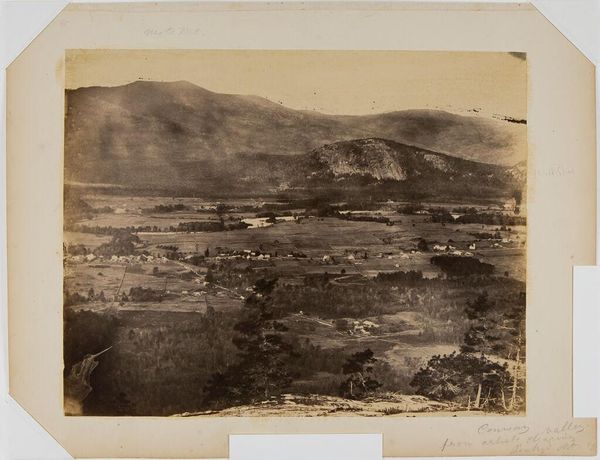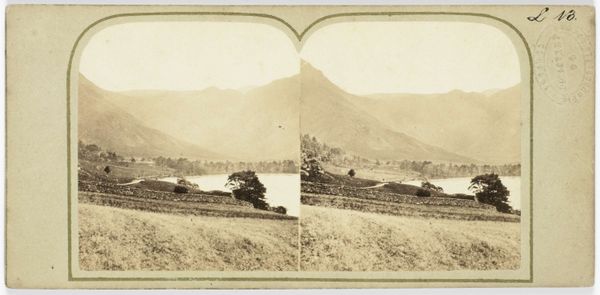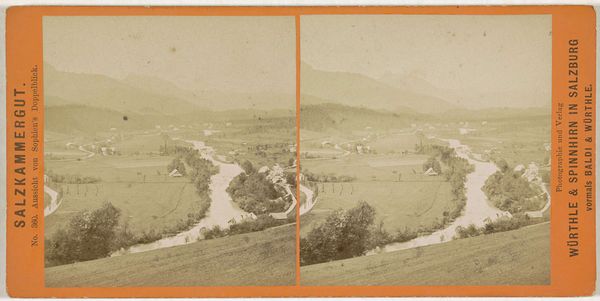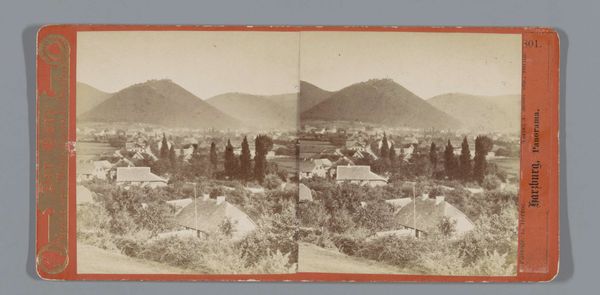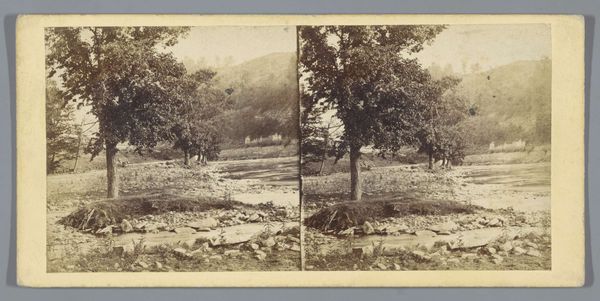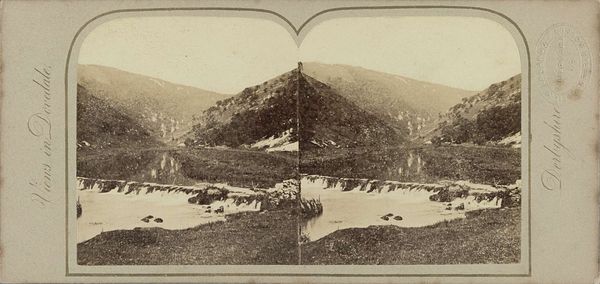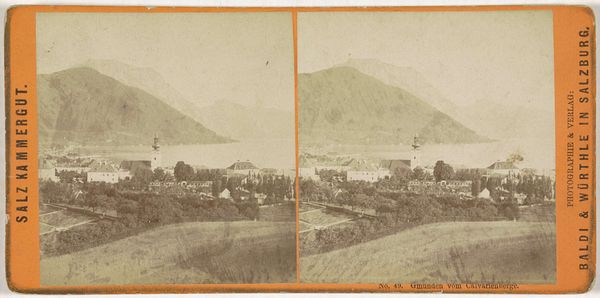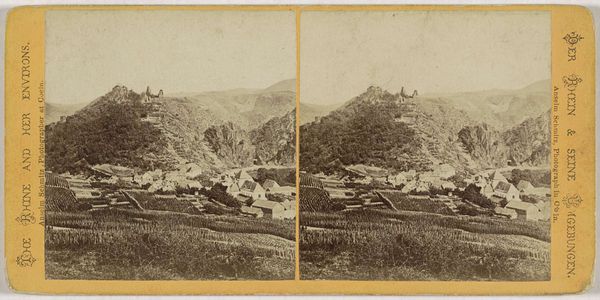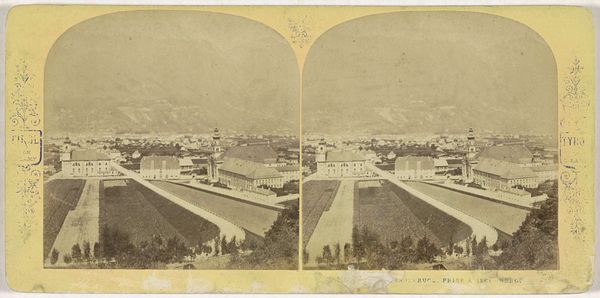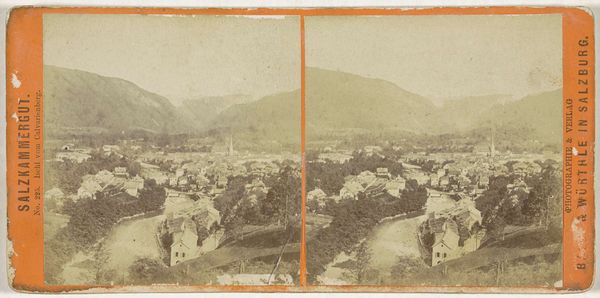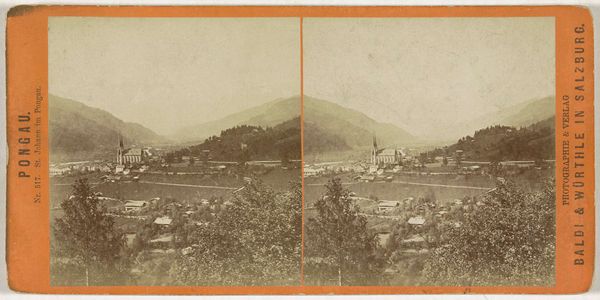
print, photography
# print
#
landscape
#
photography
#
realism
Dimensions: height 87 mm, width 176 mm
Copyright: Rijks Museum: Open Domain
Editor: Here we have a stereoscopic photograph by Hermann Selle, taken sometime between 1868 and 1890. It depicts "Blechhütte aan de Bode, nu een deel van Thale". The monochrome tones create a rather stark, almost melancholic atmosphere, don’t you think? What strikes you about this image? Curator: Absolutely. Beyond the surface-level depiction of a German landscape, I see a complex negotiation between nature, industry, and the emerging concept of national identity. The Blechhütte, a tinworks factory, is presented as part of the scenery. But what does it mean to aestheticize industrialization? Selle isn't just showing us a factory; he's placing it within a broader context, subtly shaping our understanding of progress and national development. What kind of narrative does the composition seem to be telling about labor and the environment? Editor: I see what you mean. The smoke rising from the factory is a reminder of its activity and labor. But is it fair to interpret the picture as some kind of endorsement of the pollution that the factory produces? Curator: That’s the complexity. We cannot ignore the environmental consequences or the working conditions within such factories. Remember that photography in this era was still finding its voice. This image perhaps mirrors how nineteenth-century Germany was wrestling with similar contradictions, trying to reconcile romantic ideals of nature with the undeniable transformations brought about by industrial expansion. The choice to frame it in a seemingly objective way serves to normalize, even legitimize, that relationship, despite the impact. Editor: That’s a perspective I hadn’t considered. I was too focused on the immediate visual aspects of the landscape, instead of the political context of progress at the time. Thank you. Curator: It's about questioning whose narratives are being told and whose are being silenced. Art can be a powerful tool for revealing those hidden layers of power and ideology.
Comments
No comments
Be the first to comment and join the conversation on the ultimate creative platform.



